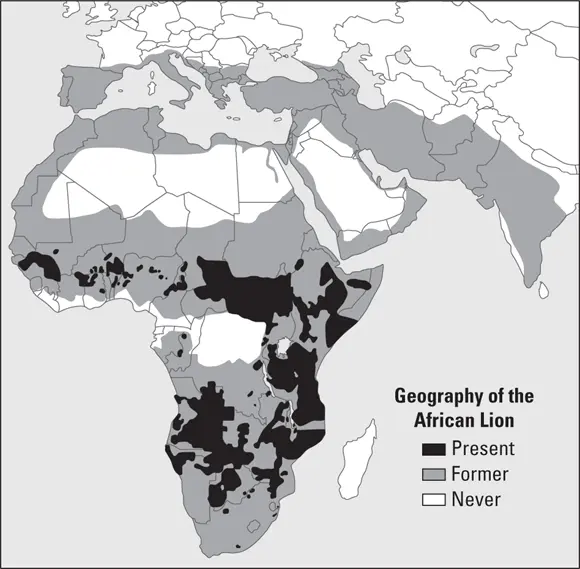Jerry T. Mitchell - Geography For Dummies
Здесь есть возможность читать онлайн «Jerry T. Mitchell - Geography For Dummies» — ознакомительный отрывок электронной книги совершенно бесплатно, а после прочтения отрывка купить полную версию. В некоторых случаях можно слушать аудио, скачать через торрент в формате fb2 и присутствует краткое содержание. Жанр: unrecognised, на английском языке. Описание произведения, (предисловие) а так же отзывы посетителей доступны на портале библиотеки ЛибКат.
- Название:Geography For Dummies
- Автор:
- Жанр:
- Год:неизвестен
- ISBN:нет данных
- Рейтинг книги:5 / 5. Голосов: 1
-
Избранное:Добавить в избранное
- Отзывы:
-
Ваша оценка:
- 100
- 1
- 2
- 3
- 4
- 5
Geography For Dummies: краткое содержание, описание и аннотация
Предлагаем к чтению аннотацию, описание, краткое содержание или предисловие (зависит от того, что написал сам автор книги «Geography For Dummies»). Если вы не нашли необходимую информацию о книге — напишите в комментариях, мы постараемся отыскать её.
Geography For Dummies
Geography For Dummies
Geography For Dummies — читать онлайн ознакомительный отрывок
Ниже представлен текст книги, разбитый по страницам. Система сохранения места последней прочитанной страницы, позволяет с удобством читать онлайн бесплатно книгу «Geography For Dummies», без необходимости каждый раз заново искать на чём Вы остановились. Поставьте закладку, и сможете в любой момент перейти на страницу, на которой закончили чтение.
Интервал:
Закладка:
Organizing Geographic Information: After geographic information has been collected, it needs to be organized in ways that facilitate interpretation and analysis. This may be achieved by grouping together relevant notes, or by constructing tables, diagrams, maps, or other graphics. Thus, the person who wants to understand the geography of pizza shops might produce a map of them based on information previously acquired. The person who is considering going into the pizza business may do the same.
Analyzing Geographic Information: Acquiring and organizing geographic information paves the way for analyzing geographic information. This is when the most heavy-duty thinking occurs. Analysis involves making comparisons, seeking relationships, and looking for connections between geographic information. What factors explain the locations of existing pizza shops? What factors make for a great location for a future pizza shop? Analyzing geographic information is kind of like playing a mystery game in which you use the information you previously acquired and organized to solve a puzzle.
Answering Geographic Questions: The process of thinking geographically culminates in the presentation of conclusions and generalizations based on the information that has been acquired, organized, and analyzed. It may reveal, for example, that pizza shops tend to be located in places that are readily accessible to a large number of people or that have lots of passers-by. Those conclusions may, of course, prove very useful to the person who wants to open a new pizza shop and is looking for the best possible location.
 Thinking geographically entails two lines of thought that are similar as well as different. They are alike in that both involve the bulleted points listed previously. The difference is that one approach focuses on where things are located, while the other ponders where things should be located. A geographer friend of mine named Phil likes to call these the international versus local rationales, respectively, for studying geography. To highlight this difference, the discussion above repeatedly referred to two people. One was trying to understand where pizza shops are located, and the other who was trying to determine where a pizza shop should be located. The following case studies help reinforce these perspectives. Each poses a geographic question (one international and one local, if you will) and challenges you to analyze geographic information before you arrive at an answer. That is, each has you thinking geographically. In doing so, you begin to acquire and develop important conceptual skills that constitute major mileposts in becoming a true geographer.
Thinking geographically entails two lines of thought that are similar as well as different. They are alike in that both involve the bulleted points listed previously. The difference is that one approach focuses on where things are located, while the other ponders where things should be located. A geographer friend of mine named Phil likes to call these the international versus local rationales, respectively, for studying geography. To highlight this difference, the discussion above repeatedly referred to two people. One was trying to understand where pizza shops are located, and the other who was trying to determine where a pizza shop should be located. The following case studies help reinforce these perspectives. Each poses a geographic question (one international and one local, if you will) and challenges you to analyze geographic information before you arrive at an answer. That is, each has you thinking geographically. In doing so, you begin to acquire and develop important conceptual skills that constitute major mileposts in becoming a true geographer.
Case Study #1: Where Something is Located
Where are African lions located and why? Obviously, they live in Africa, and I know this to be true after nearly stepping on some — seriously — while in Kenya.
I was quietly walking up to some cape buffalo for a photograph and thought I could sneak up on them by being hidden behind a tree. As I approached the tree, suddenly three lions sprang out from the grass underneath it. I can only guess that the lions were enjoying the shade or hoping to surprise one of those same cape buffalo. Spooked, the lions ran off to the west. Spooked, I pondered a change of underwear.
So, we know that lions are in Africa but not in all parts. Why? That geographic question is central to our first case study.
I’d love to be able to pack you off to Africa (with your own change of underwear) and to have you acquire relevant geographic information, but that’s not very practical. Instead, I simply refer you to Figure 2-1, which presents geographic information that has been acquired and organized in a map. So where are African lions located? What’s the message of the map?

(© John Wiley & Sons Inc.)
FIGURE 2-1:A map of the historical geography of the African lion.
The answer is that African lions are much less widespread than they used to be. The map tells you this by using two kinds of shadings, the meanings of which are shown in the map legend. One shade shows areas where lions are found at present. Another depicts where lions formerly roamed. The last, blank space indicates areas where, so far as anyone can tell, lions have never lived.
A fraction of its former self
Today, African lions in the wild live only in the handful of patches shown on the map, mainly the ones in southern and eastern Africa. But the map also tells us there was a time when the lion’s homeland consisted of a vast and contiguous hunk of Africa that stretched all the way from the Mediterranean coast in the north to the southernmost tip of the continent. Look at the map and visually compare the amount of territory that is lion country today versus the amount of former territory. Clearly, present-day lion country is a fraction of its former size and one estimate suggests that there are fewer than 23,000 left in Africa (a 40 percent loss in just the last two decades!).
What in the world — or rather, what in Africa — happened to cause such a reduction in the size of lion country? Why did it happen? And what is the significance? I do not really expect you to have the answers at your fingertips. But take a few moments again, and this time see if you can’t come up with some possible reasons as to why lions live where the map says that they do, and why lion country has decreased so substantially.
Where lions hang out
First of all, where do lions live? No, I’m not asking you for a street address; but rather, in what kind of environment do lions tend to hang out? Here are a few choices of where your average well-adjusted lion might live:
In a forest
In a desert
In a grassland
Anywhere it darn well pleases
Although the last choice has considerable merit, the best response is “in a grassland.” Lions generally live in grasslands (you can read more about where they don’t live in the sidebar titled “Animal Geography, Hollywood Style”). You may have known the answer because just about everybody has seen a TV wildlife documentary, which, in graphic detail, shows lions killing their next meal and then eating it. But just in case, next time you see one of those programs, concentrate on the physical setting instead of the kill. That’s right, skip the build-up … . the eyeing of the herd … . the stalk … the chase … . the cute little impala meeting its untimely end. Instead, focus your attention on the surrounding countryside, and what you are bound to see is that this life and death drama is playing out on what is essentially an extensive grassland.
What gives with grasslands?
But what gives with grasslands? Or rather, why do lions choose to inhabit grasslands? Here are a few choices as to why lions live in grasslands:
Green is their favorite color.
That’s where those cute little impalas live.
They run into few trees.
The rents are low.
Although each choice could be correct, the best response is “that’s where those cute little impalas live.” Lions love impalas.
Indeed, they truly love them to death. Like all wild animals, lions tend to live in places where they can find relatively abundant food to their liking. So, lions hang out where impalas, zebras, wildebeests, and other animals are on the menu. Lions, of course, are carnivores — meat-eaters. And nearly all the animals on the menu are herbivores — grass-eaters. Lions prefer to live in a grassland because, as far as they are concerned, it’s one big meat market.
Читать дальшеИнтервал:
Закладка:
Похожие книги на «Geography For Dummies»
Представляем Вашему вниманию похожие книги на «Geography For Dummies» списком для выбора. Мы отобрали схожую по названию и смыслу литературу в надежде предоставить читателям больше вариантов отыскать новые, интересные, ещё непрочитанные произведения.
Обсуждение, отзывы о книге «Geography For Dummies» и просто собственные мнения читателей. Оставьте ваши комментарии, напишите, что Вы думаете о произведении, его смысле или главных героях. Укажите что конкретно понравилось, а что нет, и почему Вы так считаете.












